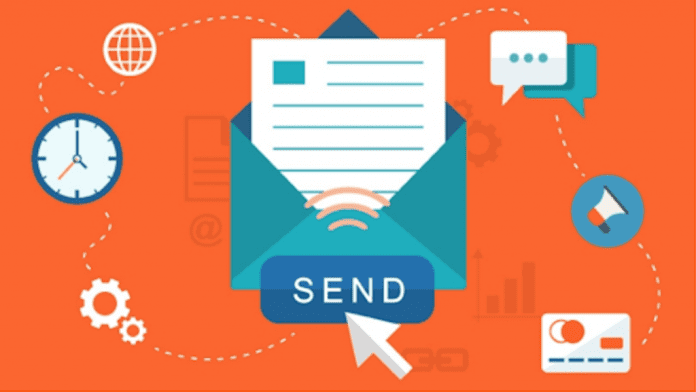Last Updated on June 4, 2025 by Rida Gul
You may develop a connection with your leads with lead nurturing emails and help them progress through the sales funnel until they are prepared to become customers.
It is among the most effective lead nurturing techniques available and a crucial component of an email marketing plan.
How come? Due to the fact that lead nurturing emails drastically raise the likelihood that your leads will make a purchase. You are done hoping that people will purchase your goods.
Instead, you’ll gradually acclimatize them till they decide.
You may build relationships with your prospects and entice them into the sales funnel by sending lead-nurturing emails.
It is among the most recommended and effective email marketing strategies.
It makes it possible for you to communicate with potential customers and keep in touch. This implies that the prospect will think of your brand first when they make their next buy.
Experts in email marketing claim that this lead nurturing email’s effectiveness in attracting customers stems from its unique operating principle. It makes them thirsty before pointing them to the location of the drink.
To put it simply, it greatly increases the possibility that your leads will make a buy.
The issue of how to begin now arises. It is not enough to just look up some samples, duplicate them, and begin e-mailing your prospects.
You should first comprehend the internal workings of lead nurturing emails before crafting a successful email. The following are some best practices for lead nurturing emails:
Table of Contents
Give more than you take
Harrison Tang, owner of Spokeo recommends the 80/20 rule. He says: “You may avoid becoming “that friend” who only gets in touch with them when they’re in need by following this advice.
Make sure your email marketing initiatives adhere to the 80/20 guideline.
Eighty percent of the time, provide your target audience with incredible value with no conditions. Aim for a sale 20% of the time.
An alternative approach to this method may include allocating 80% of your material to offering value and the remaining 20% to promoting your goods or services.
In any case, you want to assist your ideal customer as the primary objective of the conversation.”
Offer insightful information written by professionals
Susan Melony, marketing manager at NSI shares: “Ensuring you have something worthwhile to educate your leads should come first. Consider your lead nurturing emails as little articles on your blog.
Your first nurturing email may address the “top six considerations to make before purchasing data backup software,” for instance, if you offer data backup software.
Recall that you are an authority in your field. Your leads will be delighted to get your emails and stay involved with your company as long as you keep teaching them new things.”
Prioritize one relevant subject in each email
Every nurturing email needs to include a call to action and be centered on a single subject.
When writing your emails, consider the lead since they are inundated with communications all day long. Make sure the email’s content is closely related to the lead’s original conversion subject.
For instance, your lead is probably towards the top of the funnel and is investigating a potential purchase if they downloaded a FAQ white paper on data backup software.
“Selling the importance of data backup software to your management team” may be the subject line of your first email. Address the issue your lead is attempting to resolve head-on.
Keep it brief
Now is not the time to fuss with graphics, bespoke HTML, or fonts. In five seconds, the lead should be able to scan your email and understand the value it offers quickly.
In an email, information overload comes rapidly. Your campaign’s efficacy will be diminished and your unsubscribe rate will rise if you include supplementary calls-to-action or irrelevant links.
Emails should ideally be between 50 and 125 words, but if you want to thoroughly engage your leads, feel free to write more. But wherever you can, make it brief.
Understand your client
Lead nurturing requires ongoing, meaningful connections with your customers, which is only possible if you are acquainted with them.
Take note of your clientele and craft messages that will facilitate their interaction with your business.
Gaining a deeper understanding of your customers’ tastes will take time. Put yourself in their shoes and try to discover the answers to queries such as:
“How would this product benefit my business?”
“Are there better options available?”
“Is it reasonably priced?”
You’ll be able to solve their difficulties more effectively thanks to the answers. Additionally, customer service increases with more precise and pertinent sales presentations.
Divide up your leads
Percy Grunwald, owner of Compare Banks shares: “You may provide your leads with a personalized, relevant, and meaningful experience by using lead segmentation. Throughout the sales cycle, it helps you to cultivate your audience by providing the appropriate material at the appropriate moment.
Not only does segmenting your leads make email nurturing easier, but it also allows you to group leads based on interests.
Marketers use buyer personas, smart forms, and site analytics, among other techniques, to segment their leads.
This is one of the main reasons landing pages and the emails that lead to them are so important for any inbound marketing strategy.
Identify the essential characteristics that your leads possess: corporate, psychographic, geographic, or sociographic.
For instance, consider segmenting an ice cream shop’s clientele according to where it is located. An ice cream shop divides a nation into hotter sections and concentrates on those where people are more likely to purchase ice cream.”
Keep each email to a single, relevant topic
Each email should concentrate on a single topic and contain a call to action (CTA), as opposed to covering several subjects in one.
If each email focuses on a single topic at a time, it will help avoid confusion and increase the likelihood that your prospects will respond.
For example, your first email may be titled “Tips and tricks for beginner gardeners,” because your lead purchased an eBook on gardening fundamentals from a company’s website to assist them in learning more about the subject.
In this manner, the business could communicate with prospective clients directly.
















